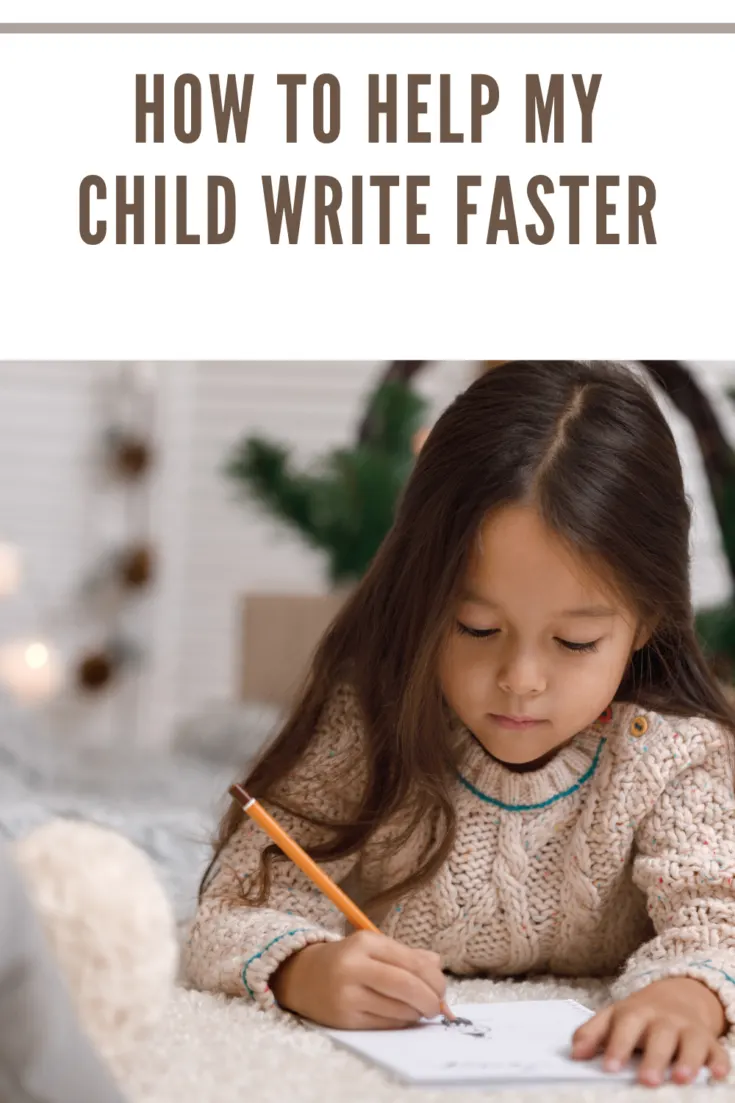It’s not unusual for children to write at a slow speed, particularly when they are first learning to write. Writing is a complex process, requiring many different skills to produce a final product. Young children must know which letters they need and remember how to form each one. This task alone can take time when a child is in the early stages of writing development. The handwriting worksheets on primarilylearning.org can help children practice printing each letter. Gaining automaticity with forming letters can help children increase their writing speed.
Beyond printing individual letters, children must also become efficient at writing words. If we break this task down, we see that writing words and sentences require more skills. For example, attention must be paid to spacing letters and words. Children are also trying to hold the sentence in their head as they write. This does not always come easily to beginning writers. These pages allow children to practice writing sentences, first by tracing then by writing independently. Continued experience with writing sentences can help children improve their writing speed.
It makes sense for children to practice their writing to gain speed with writing. Practice is how we get better at many things! However, if writing is an arduous task for a child, doing it more often may be met with resistance. Therefore, it’s important to provide writing opportunities that may pique your child’s interest. It can also be helpful to use some short, quick writing activities that may appear less laborious.

Writing Activities
Making a list is a short writing activity and can be tailored to your child’s interests. If helping you write the grocery list doesn’t appeal to your child, perhaps he would like to make a Christmas list, a list of friends to invite to his birthday party, or a list of activities he would like to do during your next free afternoon together.
Some children may like the idea of authoring their own books. Even very young children may be excited to staple pages together to create a book. This activity can be geared towards a child’s age, with beginning writers drawing pictures and labeling them with one word. More experienced writers may add a sentence to describe each picture. Older children can, of course add more text to tell their stories.
Writing letters is another way to provide your child with writing practice. She may find it fun to send a letter in the mail to a friend or relative, then receive a reply back. Or, she may like leaving little notes around the house where family members will discover them. Leaving notes for her, too, will add to the fun!
Writing may be perceived as more fun if it’s part of a game. The enjoyment of creating a clue game may be enough to make your child forget he’s even writing! He begins by writing one clue, which hints where the next clue is hidden. The hunt for clues can have the participants going all over the house or even outside. The very last clue can lead participants to a special surprise!
When Problems Persist
If you continue to have concerns about your child’s writing speed, it’s best to consult a professional. An occupational therapist can assess your child’s pencil grip, posture, and whether hand fatigue is a factor in your child’s difficulties. Gaining a professional’s opinion can help put your mind at ease and provide you with further recommendations to support your child’s progress.
